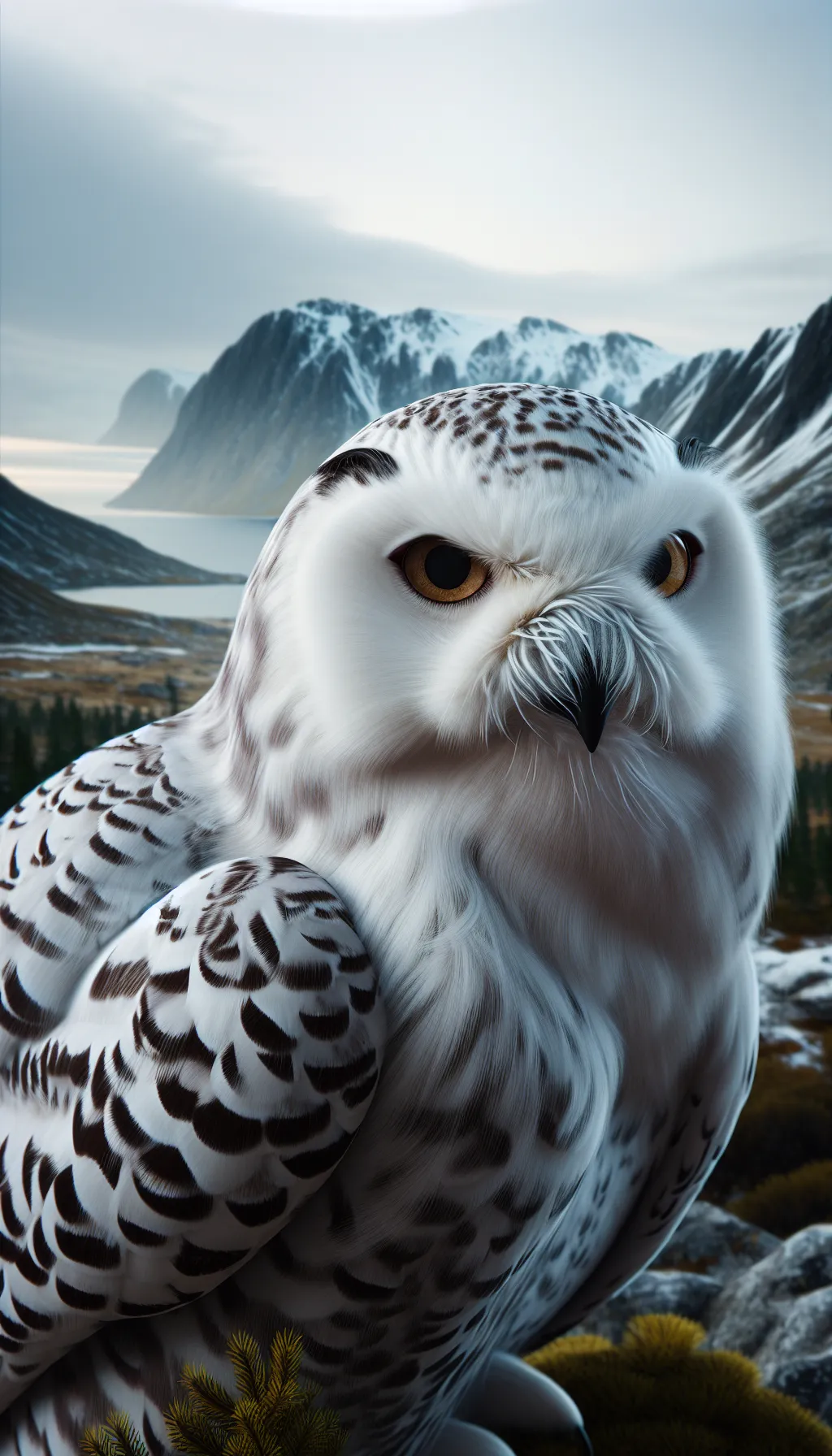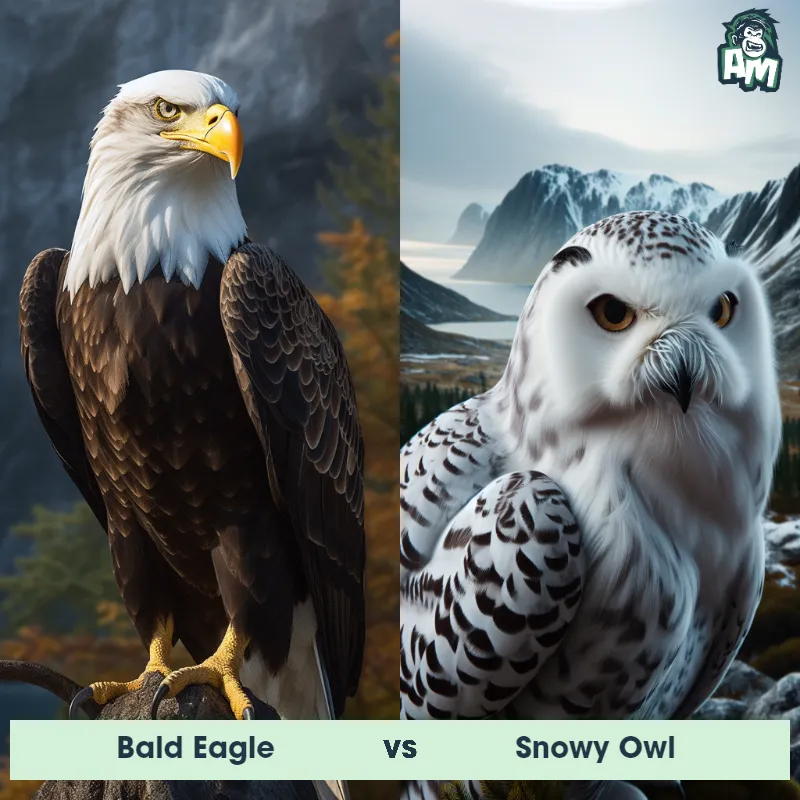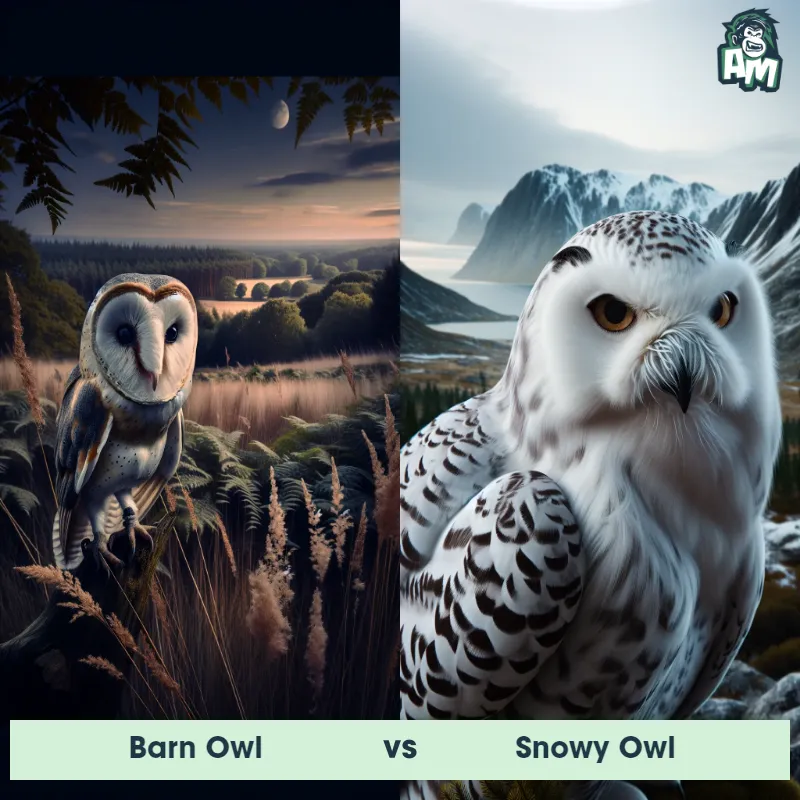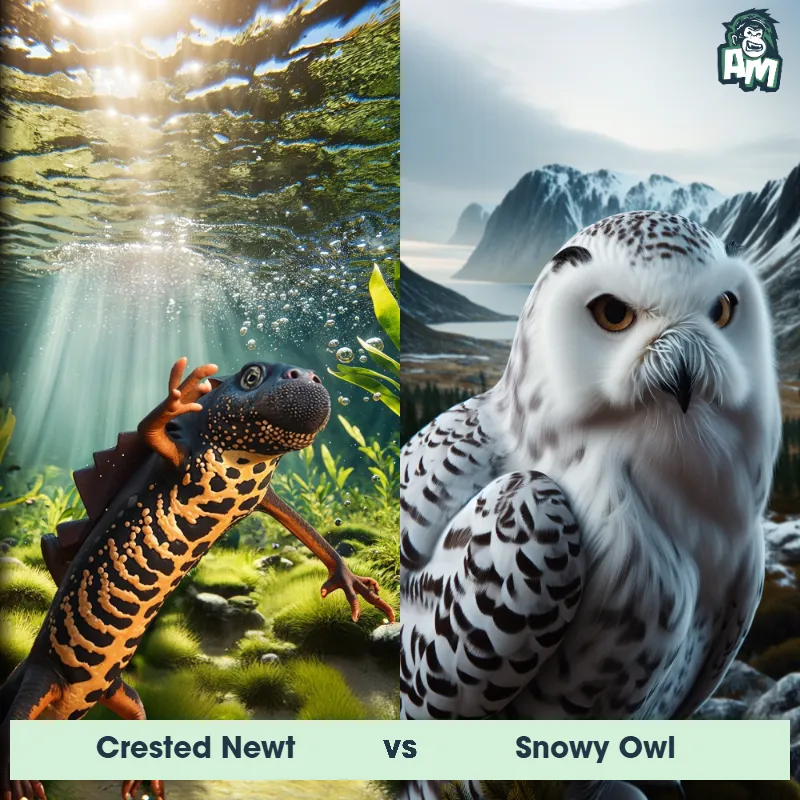The Snowy Owl
The Snowy Owl, also known as Bubo scandiacus, is a majestic bird species known for its striking white plumage, which helps it blend seamlessly into its snowy habitat. They have a wingspan of up to 5 feet and stand around 2 feet tall. Snowy Owls have large, round heads with yellow eyes and a sharp, black beak. These birds are primarily diurnal and spend their time soaring, hunting small mammals like lemmings and rabbits, among other prey, in open tundra regions of the Arctic.

| Snowy Owl | |
|---|---|
| Size | 20-28 inches (50-70 cm) |
| Weight | 3.5-6.5 pounds (1.6-2.9 kg) |
| Speed | 50mph (80km/h) |
| Key Strength | Powerful talons for capturing prey |
| Biggest Weakness | None specified |
| Scientific Name | Bubo scandiacus |
| Family | Strigidae |
| Habitat | Arctic tundra |
| Geography | North America and Eurasia |
| Diet | Mainly lemmings and other small mammals, also birds |
| Lifespan | 9 years - 10 years |

The Snowy Owl
The Snowy Owl, also known as Bubo scandiacus, is a majestic bird species known for its striking white plumage, which helps it blend seamlessly into its snowy habitat. They have a wingspan of up to 5 feet and stand around 2 feet tall. Snowy Owls have large, round heads with yellow eyes and a sharp, black beak. These birds are primarily diurnal and spend their time soaring, hunting small mammals like lemmings and rabbits, among other prey, in open tundra regions of the Arctic.
Fun Fact: Snowy Owls have the ability to turn their heads 270 degrees, thanks to their flexible necks, allowing them to spot prey from various angles without moving their bodies.
| Snowy Owl | |
|---|---|
| Size | 20-28 inches (50-70 cm) |
| Weight | 3.5-6.5 pounds (1.6-2.9 kg) |
| Speed | 50mph (80km/h) |
| Key Strength | Powerful talons for capturing prey |
| Biggest Weakness | None specified |
| Scientific Name | Bubo scandiacus |
| Family | Strigidae |
| Habitat | Arctic tundra |
| Geography | North America and Eurasia |
| Diet | Mainly lemmings and other small mammals, also birds |
| Lifespan | 9 years - 10 years |
Snowy Owl Matchups
We use AI to simulate matchups between the Snowy Owl and other animals. Our simulation considers size, strength, and natural predatory behaviors to determine the most likely outcome.

Can't find the Matchup you want?
Create Your Own MatchupSnowy Owl: Diet, Predators, Aggression, and Defensive Behaviors
What do Snowy Owls eat?
Snowy Owls primarily feed on small mammals, particularly lemmings, voles, and various rodents. They will also hunt birds such as ptarmigans and ducks. Occasionally, they may even prey on fish.
Do Snowy Owls have any predators?
Snowy Owls are apex predators in their Arctic habitat, meaning they have very few natural predators. However, their nests and eggs may be preyed upon by Arctic foxes, wolves, and other birds of prey like the Great Horned Owl.
Are Snowy Owls aggressive?
Snowy Owls are known to be aggressive when defending their nests and territories. They will attack intruders, including other predatory birds, to protect their young or food sources.
Do Snowy Owls fight?
Snowy Owls are territorial birds and will engage in fights with other Snowy Owls or competing predators for resources. These fights can involve loud vocalizations, talon strikes, and aerial battles.
How do Snowy Owls defend themselves?
Snowy Owls have several methods of defending themselves against predators. They rely on their cryptic white plumage to blend into their snowy surroundings, making them difficult to spot. They can also use their powerful talons and beak to fend off attackers if necessary.
What is the biggest weakness of a Snowy Owl in a fight?
Despite their impressive power and defensive abilities, Snowy Owls can be vulnerable to larger predators like Arctic foxes or larger birds of prey. Additionally, their reliance on a specific diet of small mammals makes them susceptible to fluctuations in prey availability.
Fun Fact: Unlike most other owl species, Snowy Owls are not strictly nocturnal, and they can be active during the day, making them diurnal hunters.
Fun Fact: Snowy Owls have an impressive flight range and are known to embark on migration journeys that can span thousands of miles, reaching as far south as the northern parts of the United States during the winter months.













